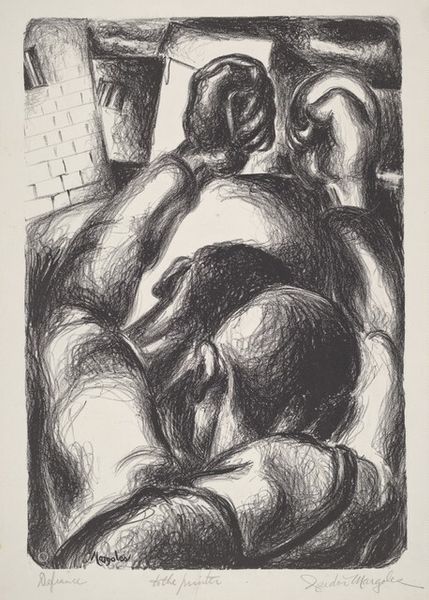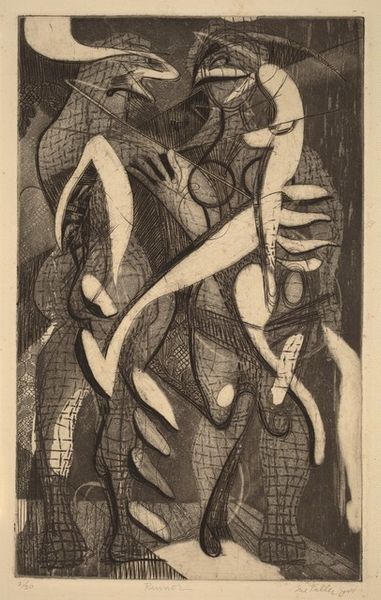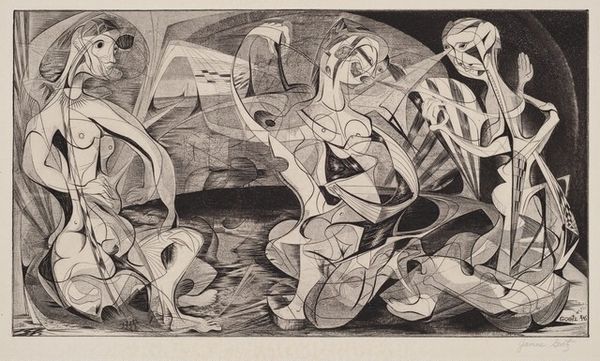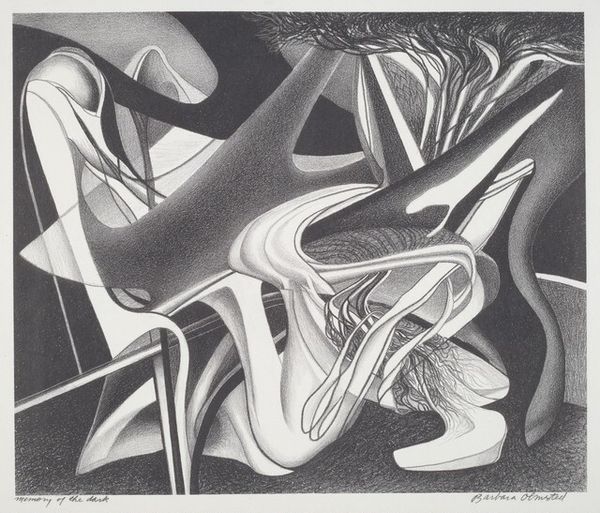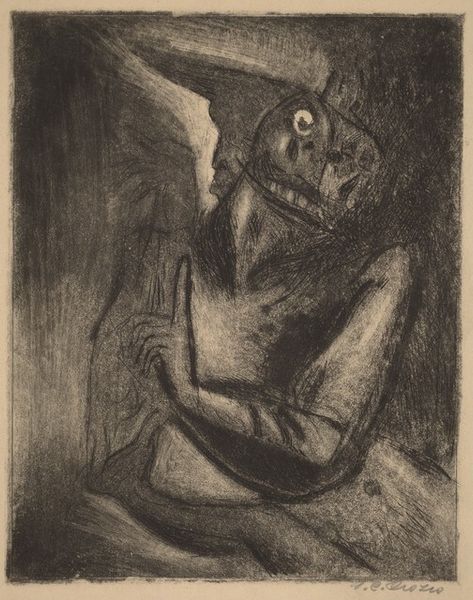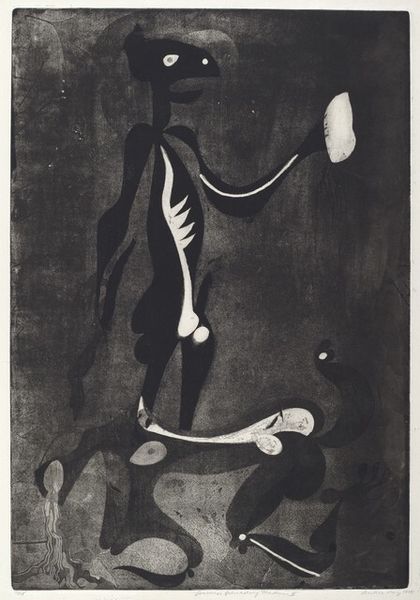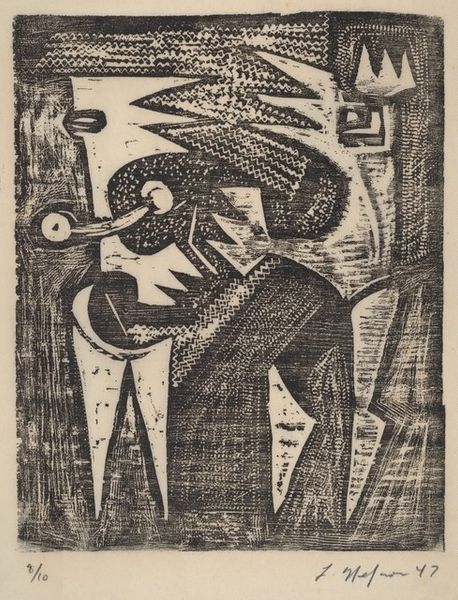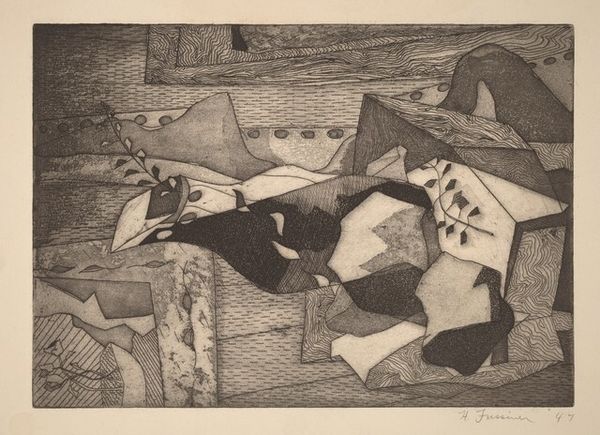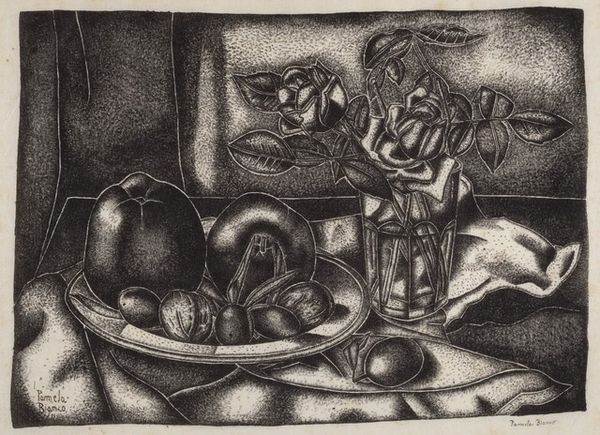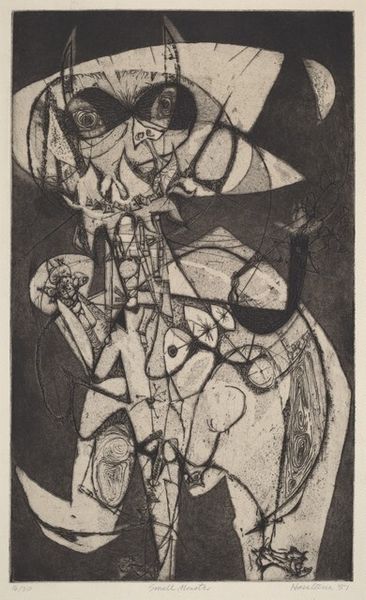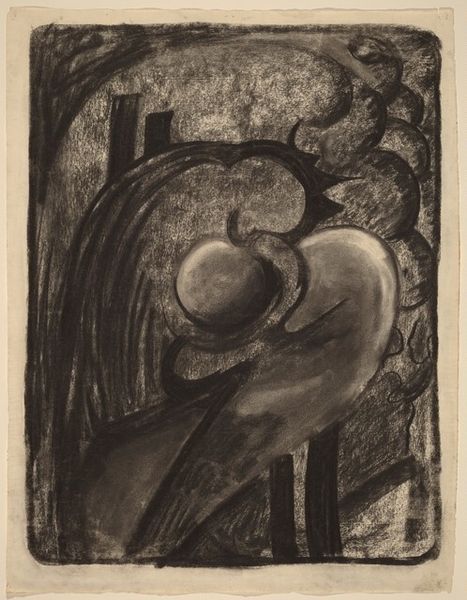
print, etching
#
abstract-expressionism
# print
#
etching
#
figuration
#
form
Copyright: National Gallery of Art: CC0 1.0
Curator: Let's spend a few minutes discussing Pierre Courtin’s etching, "Recumbent Figure," from 1946. Editor: It's immediately striking how angular it is. Almost fragmented, creating a feeling of unease or perhaps even confinement despite the subject being at rest. Curator: Absolutely. The printmaking process itself, particularly etching, lends itself to such precise, almost brittle lines. This was achieved by using acid to bite into a metal plate, giving Courtin tremendous control over line quality and texture. One can imagine the labor involved in achieving such intricacy. The paper selected would also determine the final affect. Editor: The figure itself, though abstracted, still resonates with symbolic weight. We recognize the human form, yet it’s been deliberately reshaped. Perhaps hinting at a sense of post-war psychological trauma? There's a fragility here, vulnerability rendered through fractured forms. I see it as reflective of wider European cultural anxiety at the time. Curator: I am curious about the abstraction. For Courtin, was it primarily an engagement with form itself? Or a reflection on the human condition via the industrial and mechanized realities of that historical moment. The etching as a repeatable, almost industrial process. How might this process allow for his own exploration of trauma and emotion through material means? Editor: It could be both, couldn’t it? I keep coming back to that contrast—the title promises repose, yet the image evokes such inner turmoil. Perhaps the figure is trapped, caught in the net of trauma, its peace eternally disturbed. The dark shading emphasizes shadows, deepening the emotional complexity and adding to this potential symbolic weight. Curator: Considering the means of its production really gives the print the ability to capture a wider commentary regarding emotion, mass media and culture. Editor: Looking closer, it reveals layers of symbolic narrative. I am glad we took a deeper look.
Comments
No comments
Be the first to comment and join the conversation on the ultimate creative platform.
